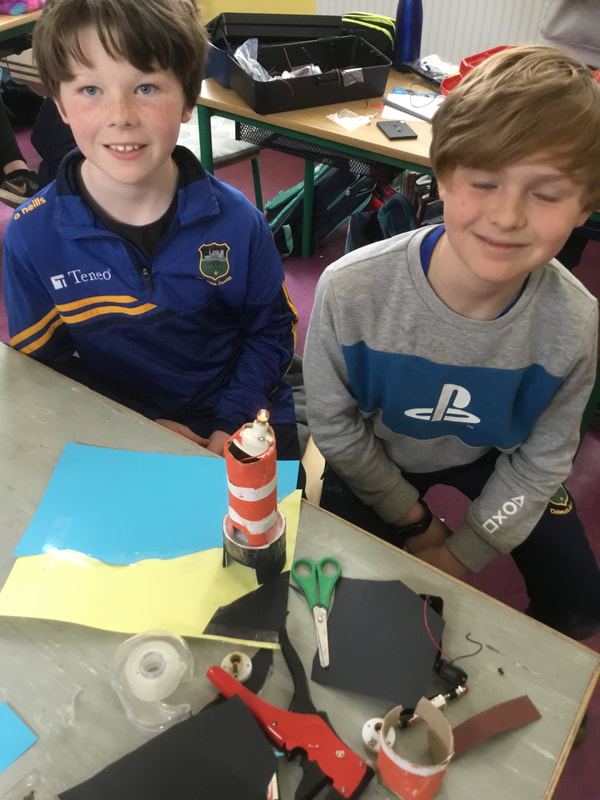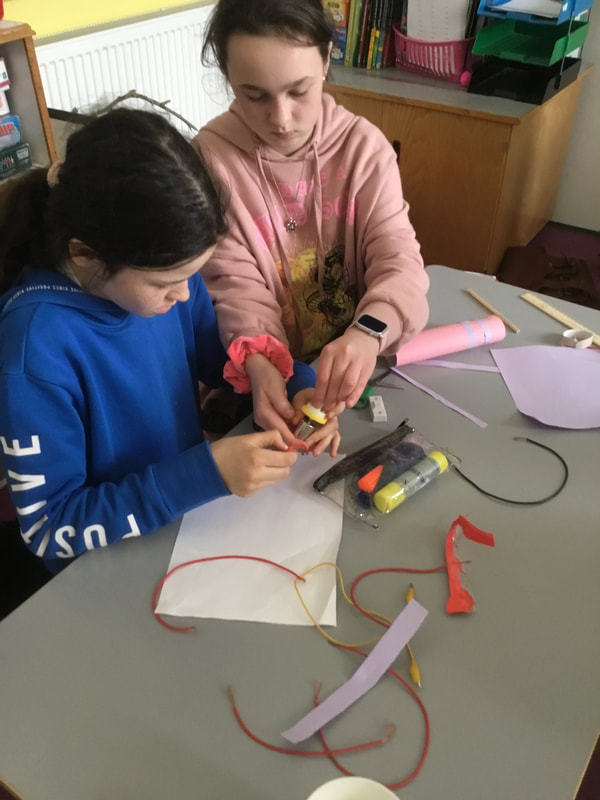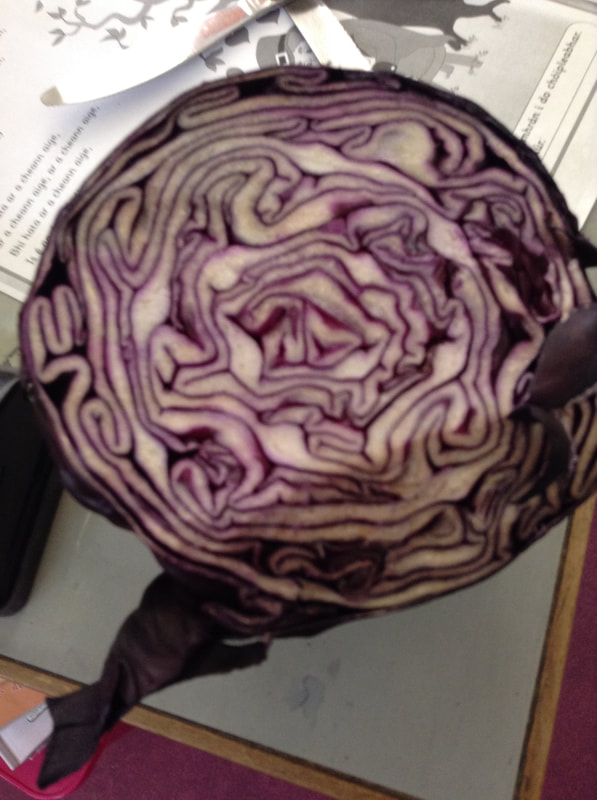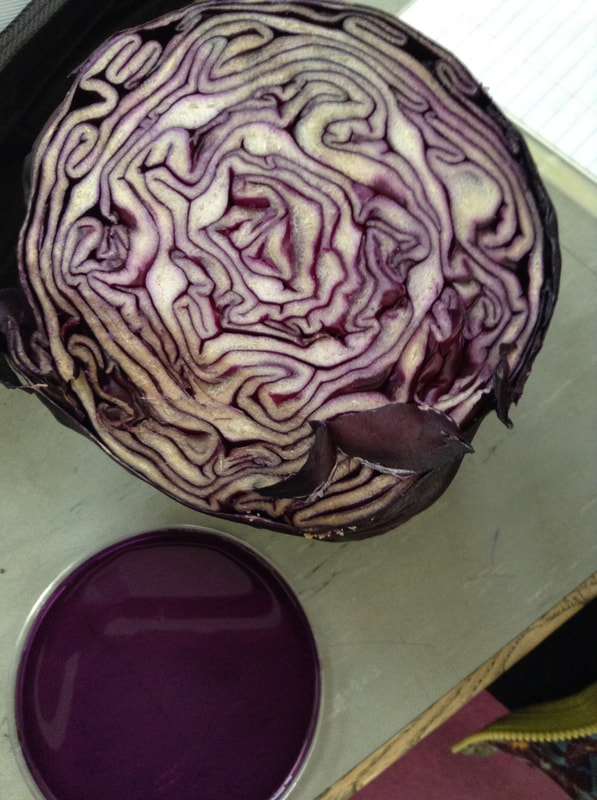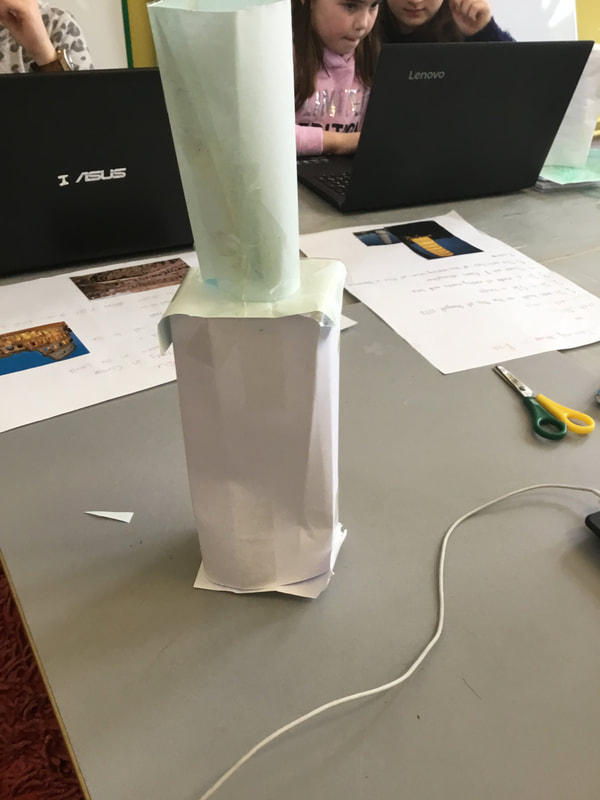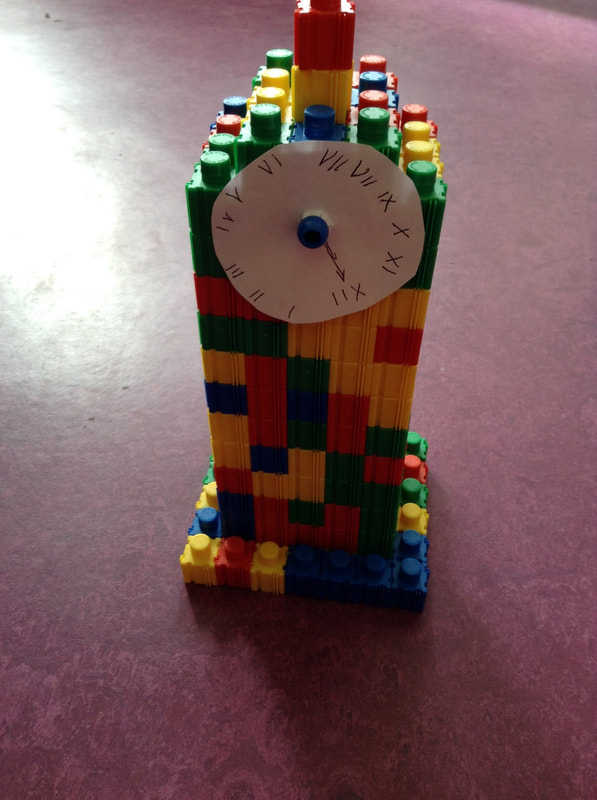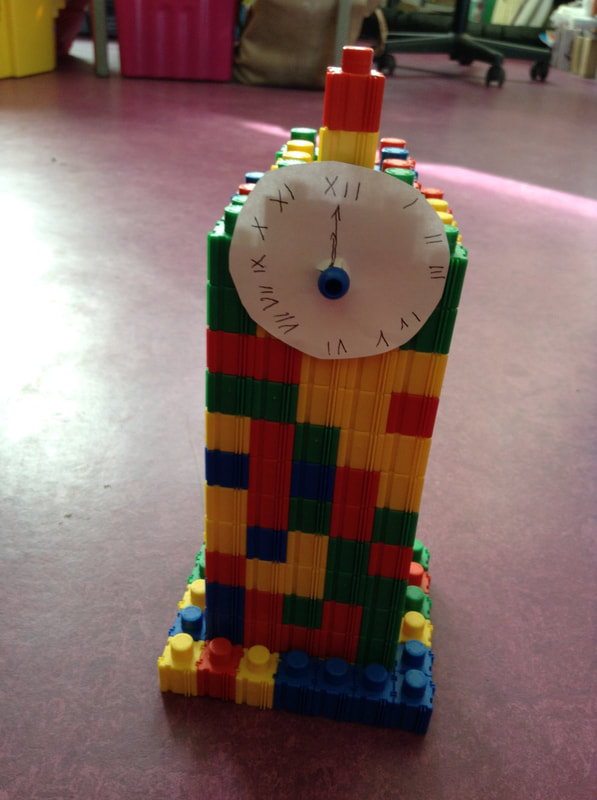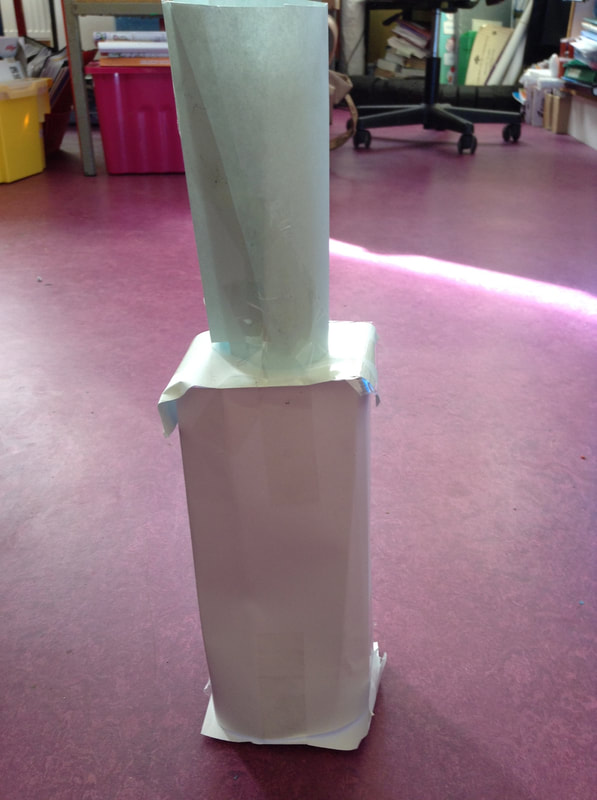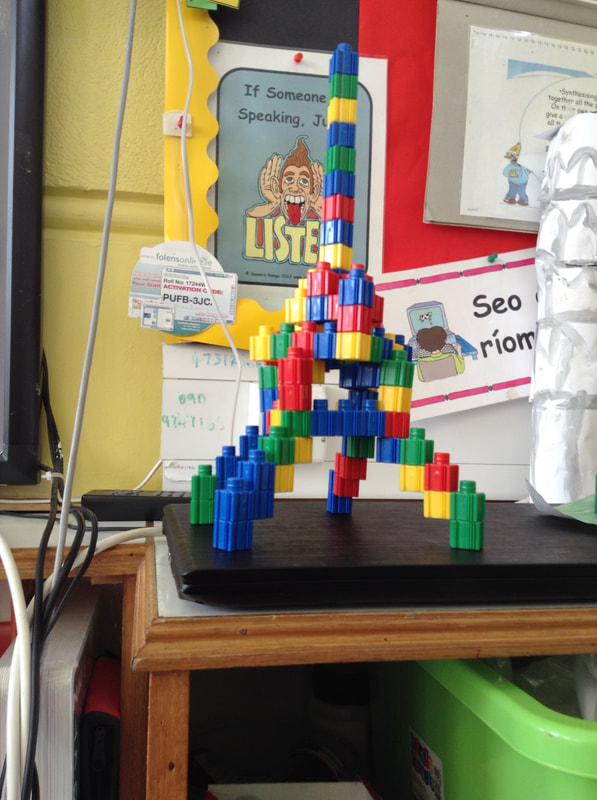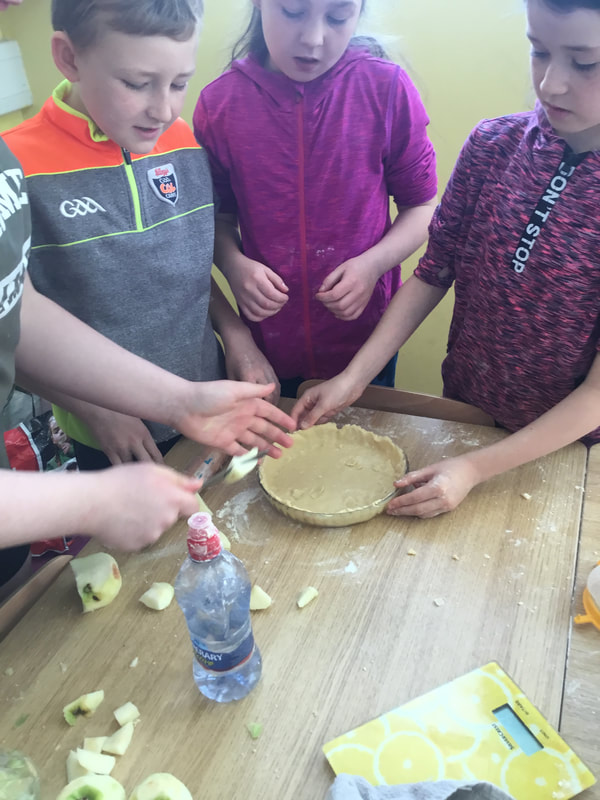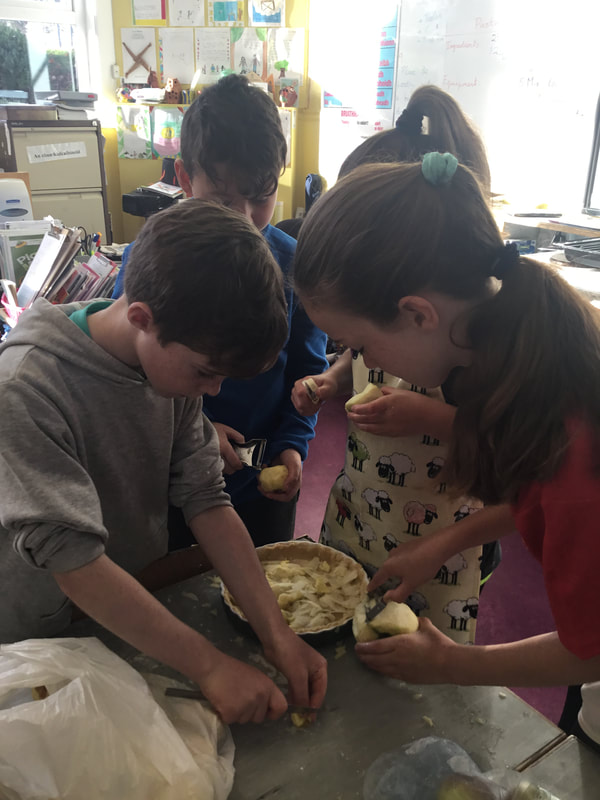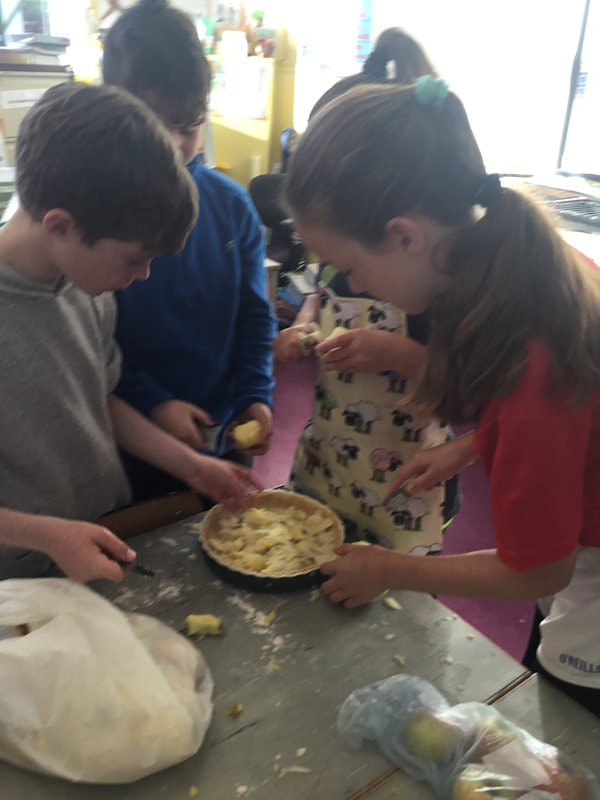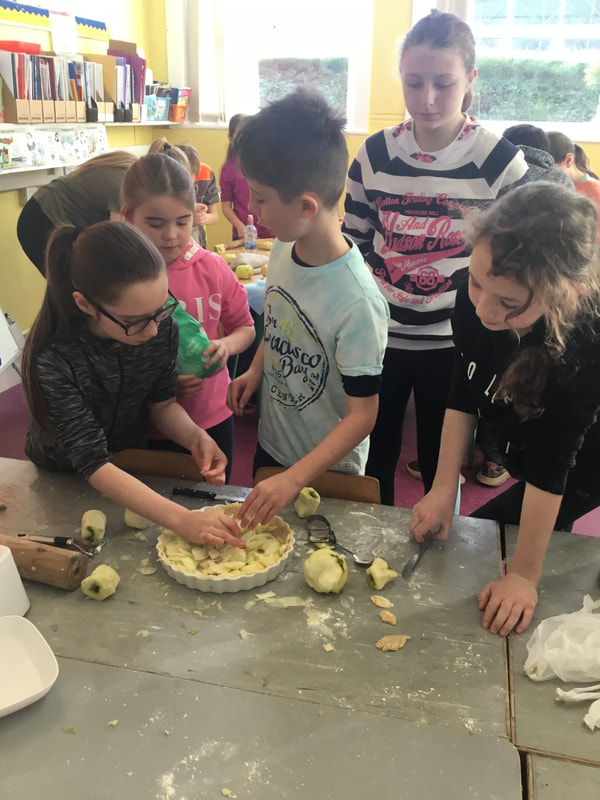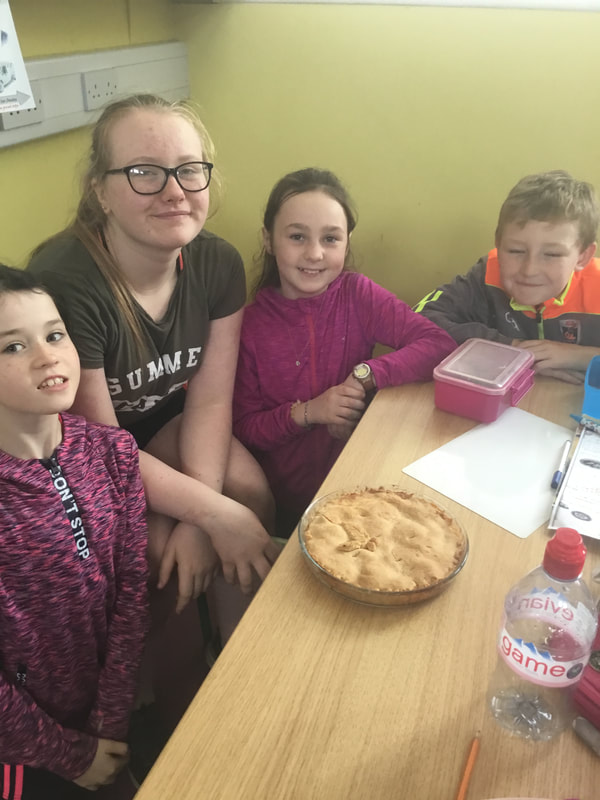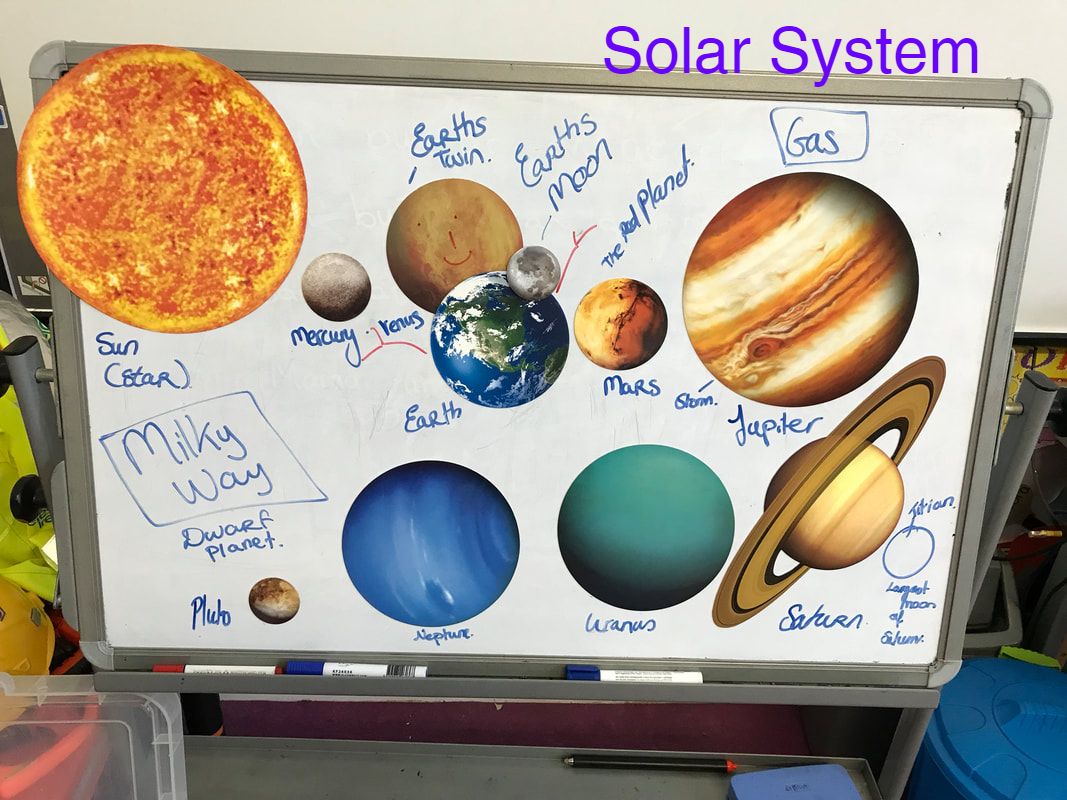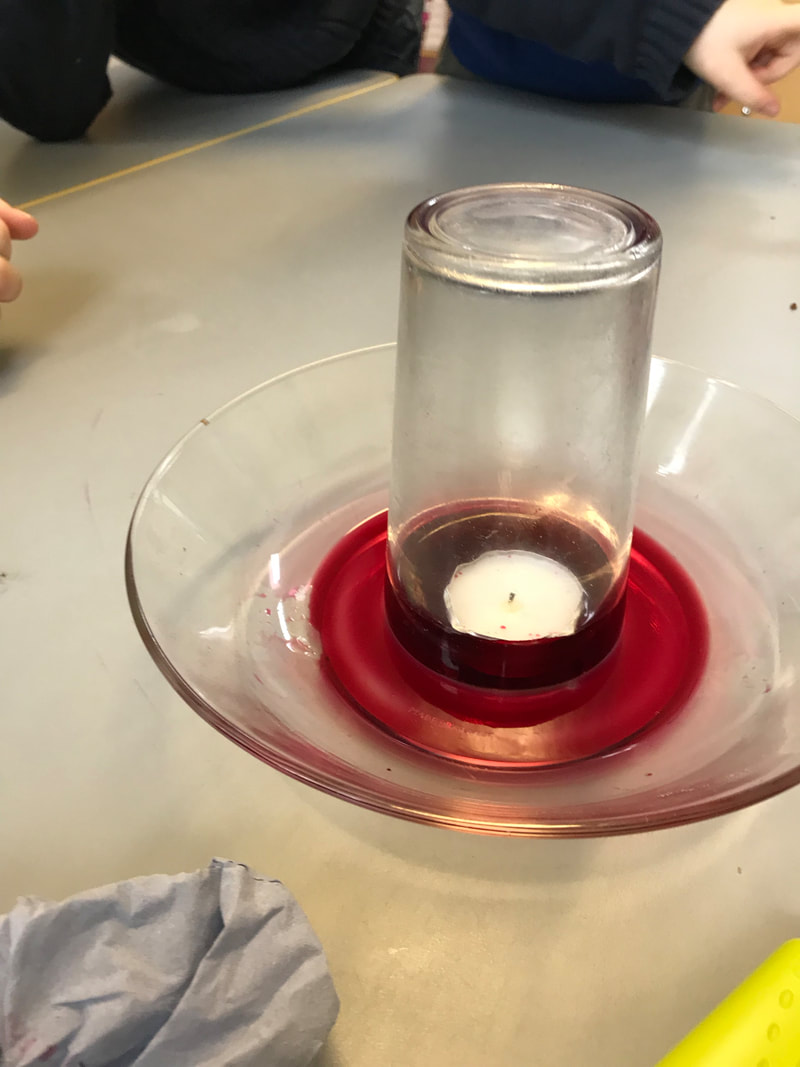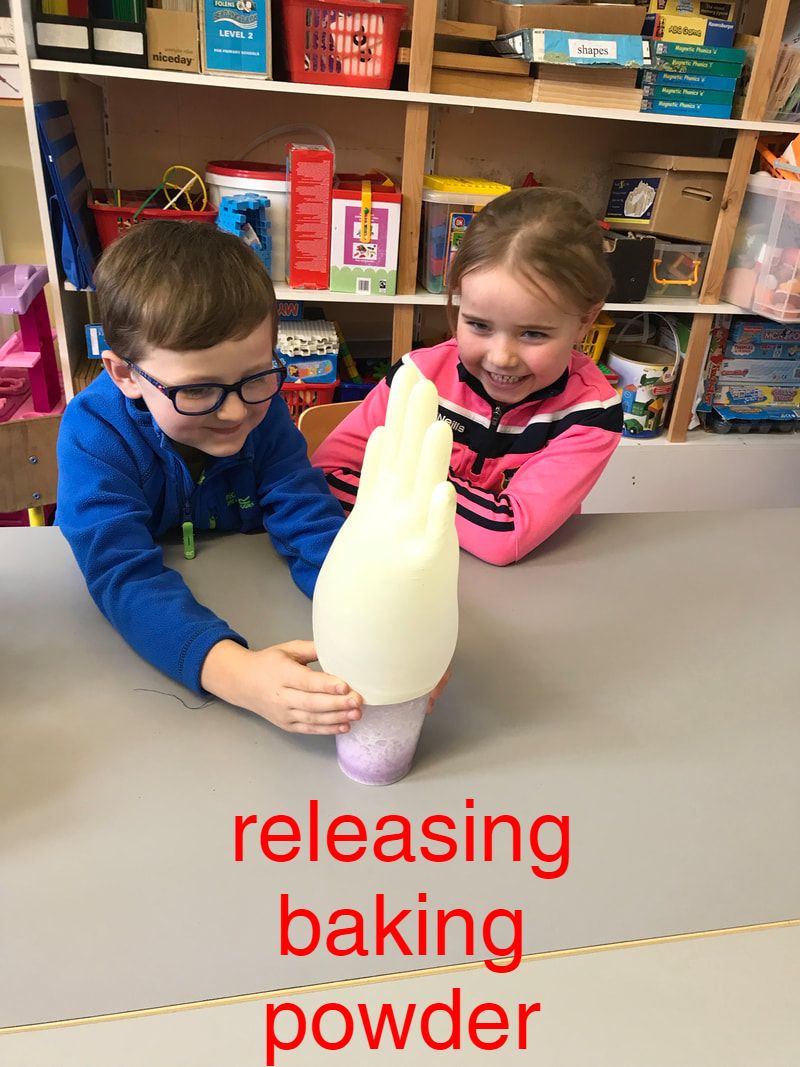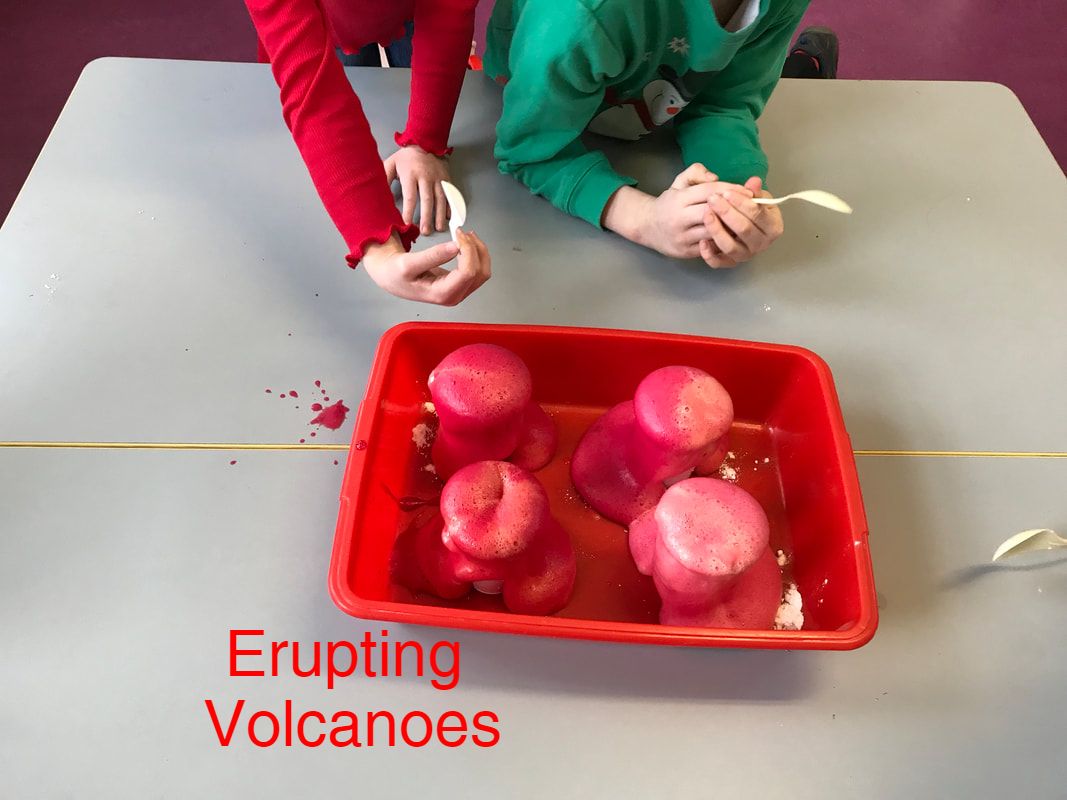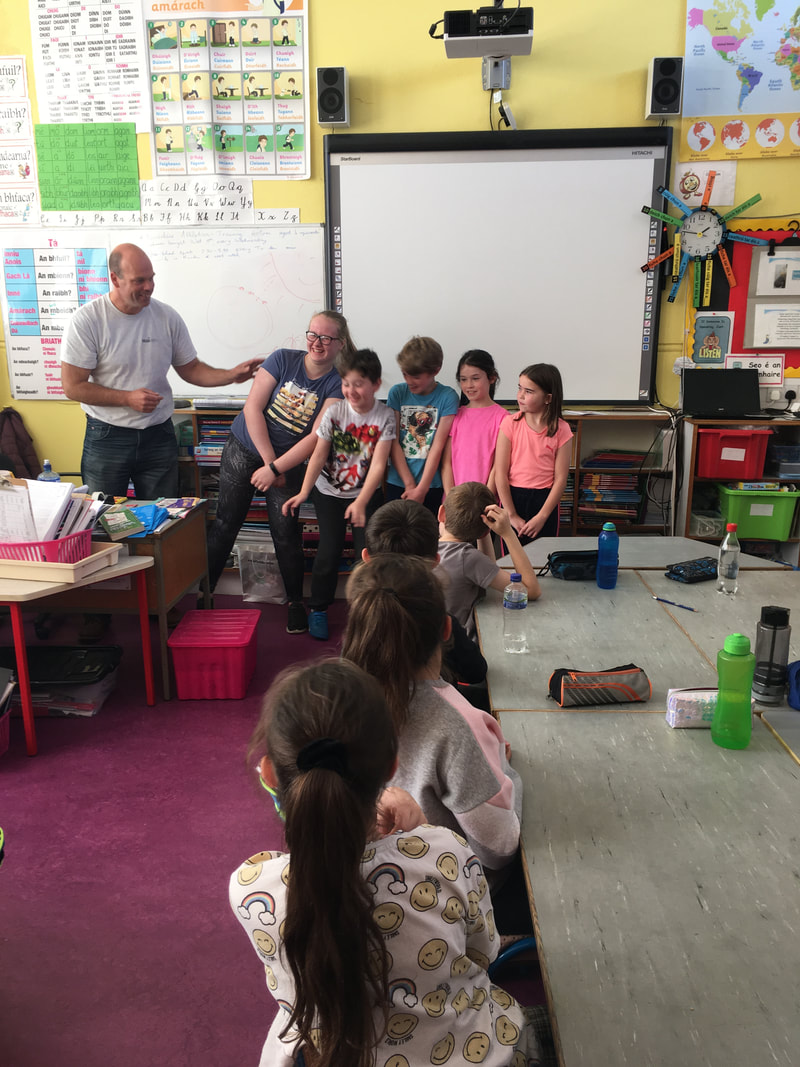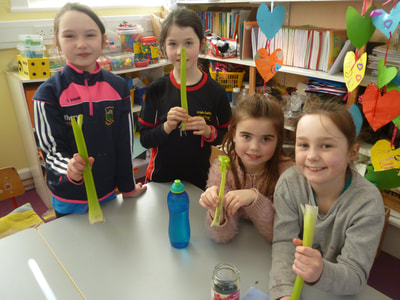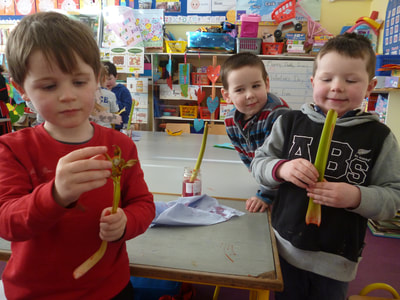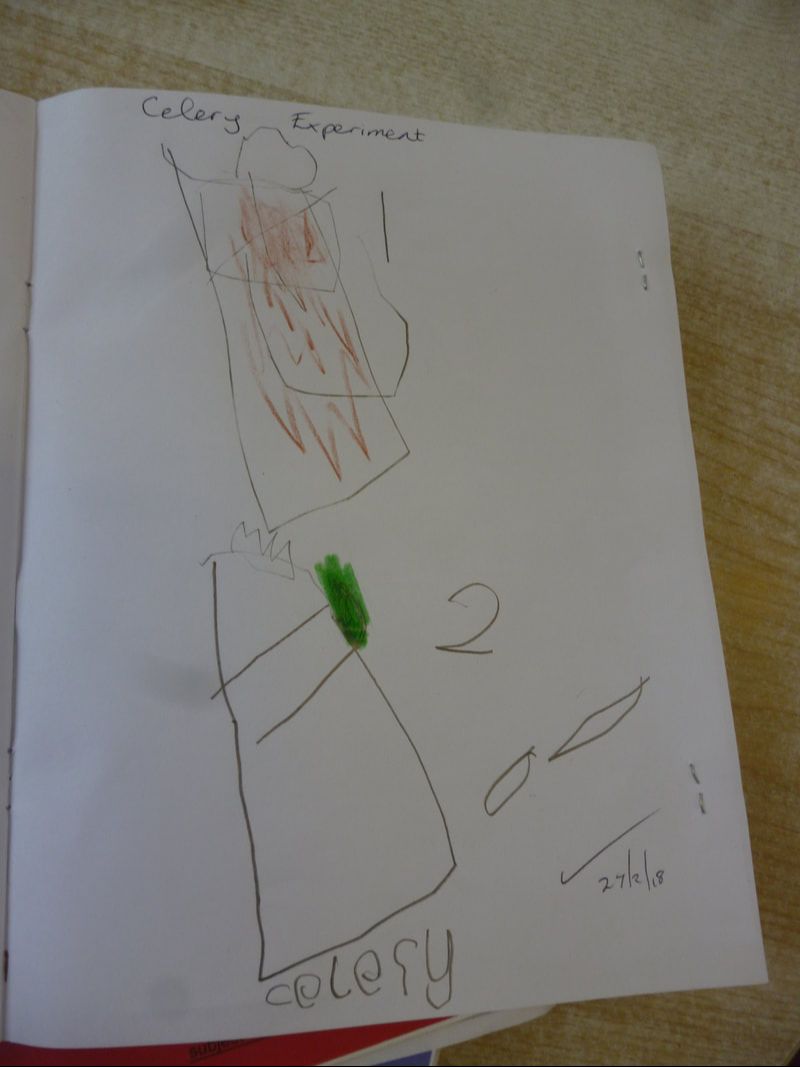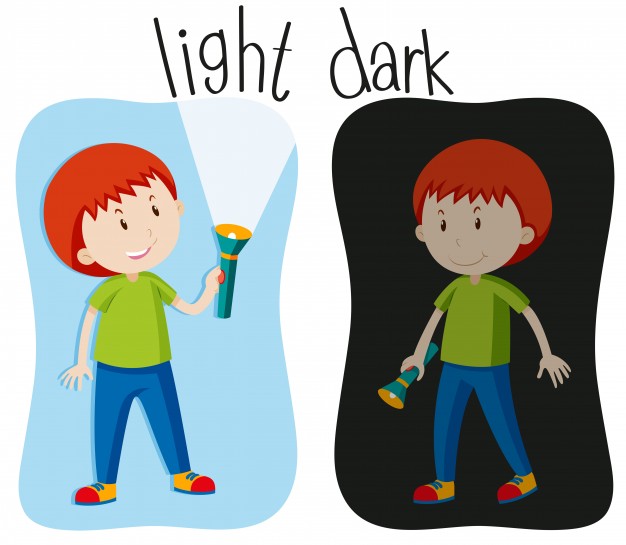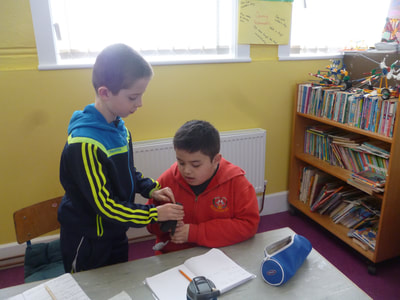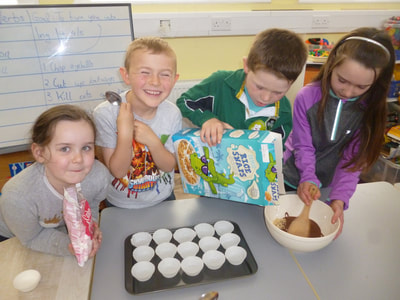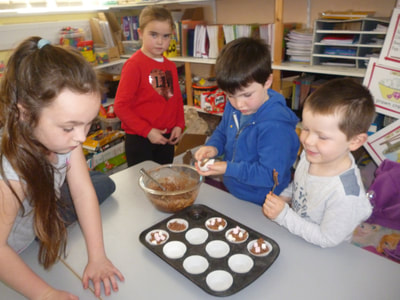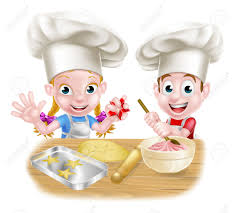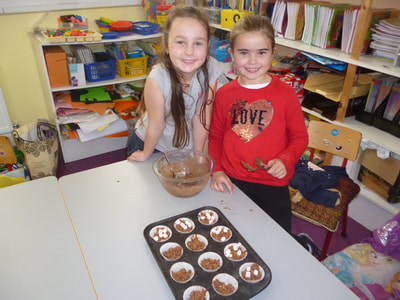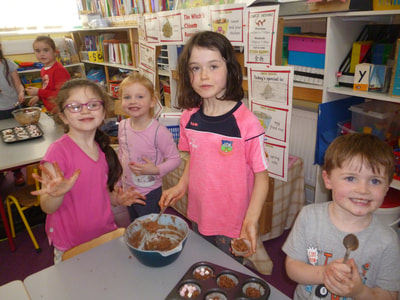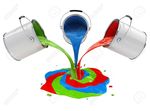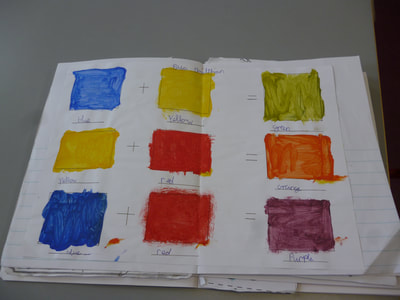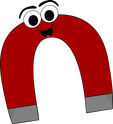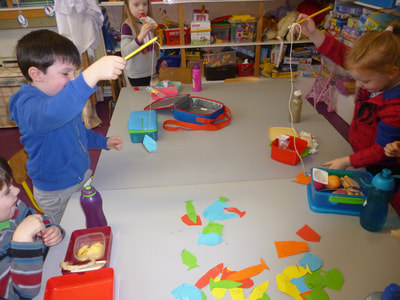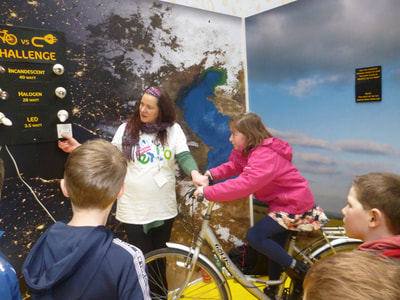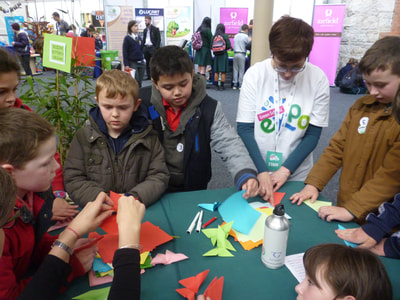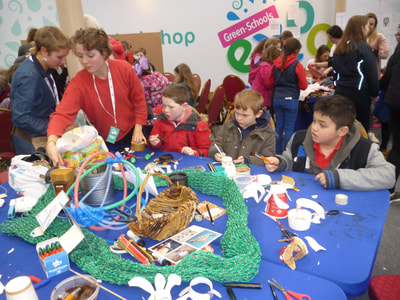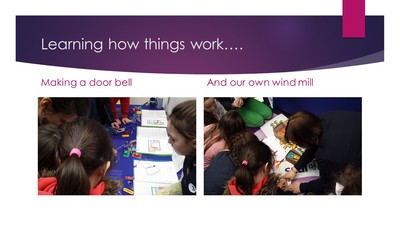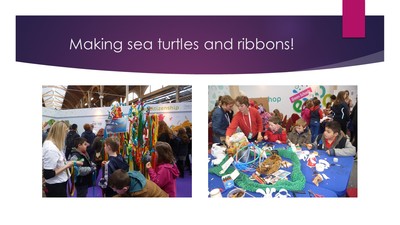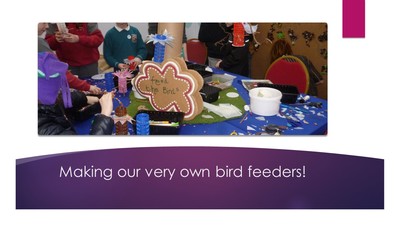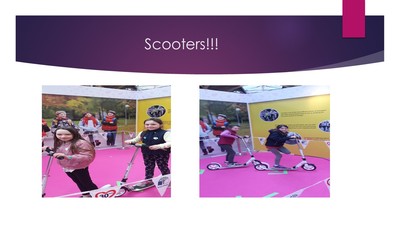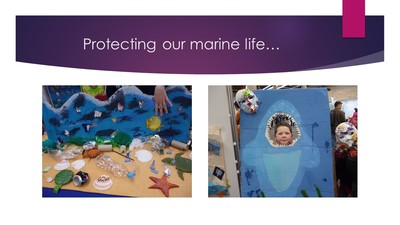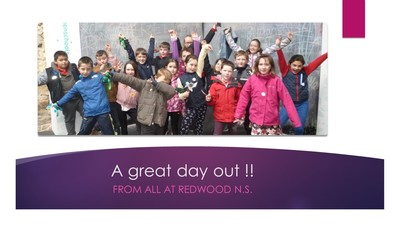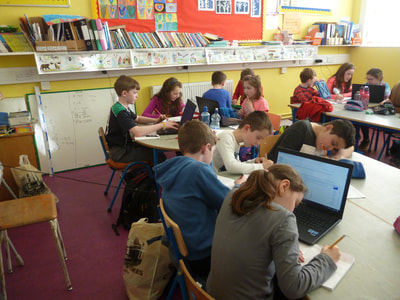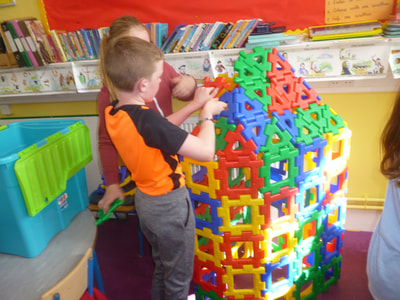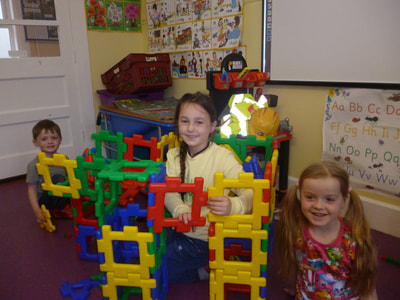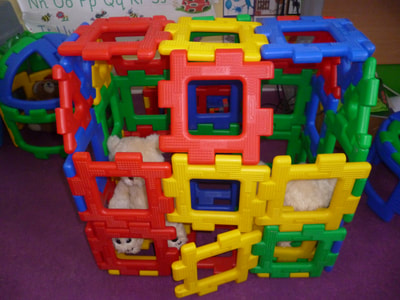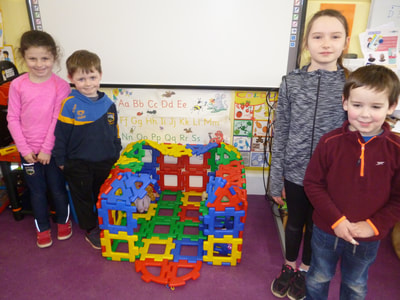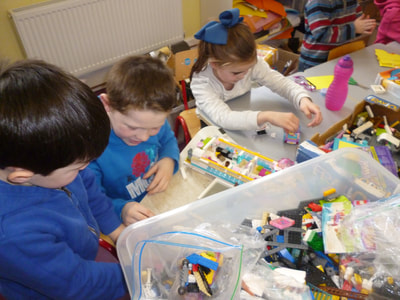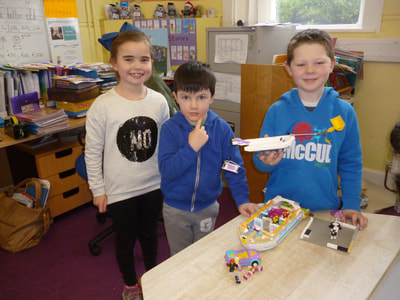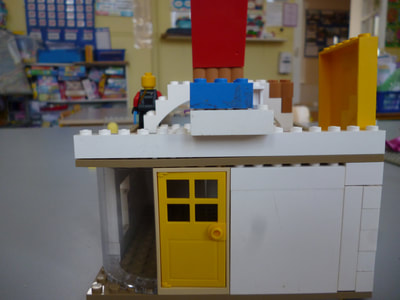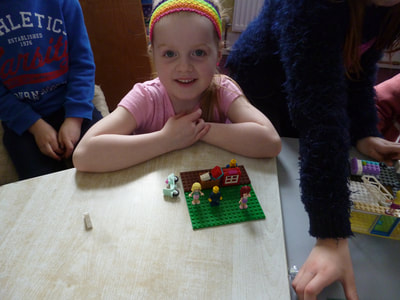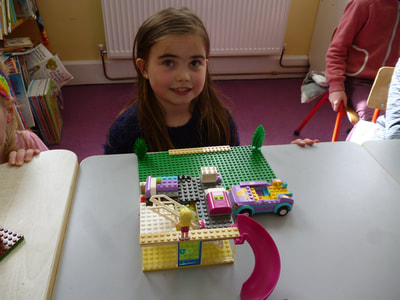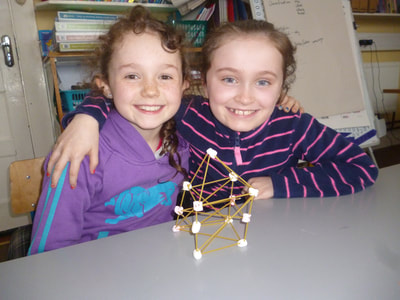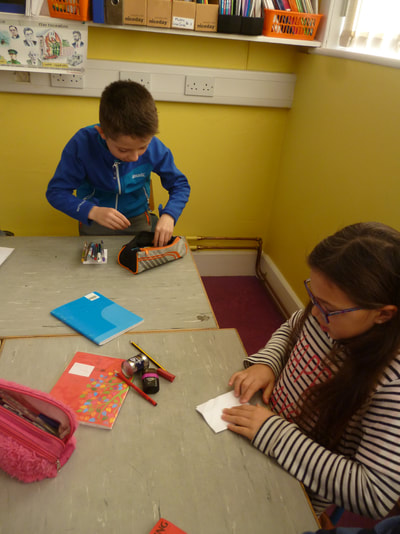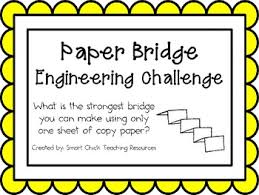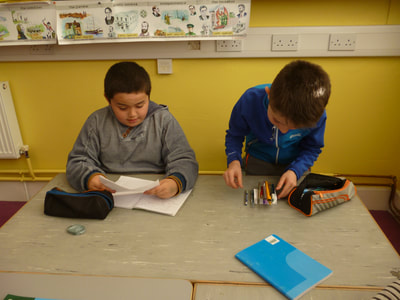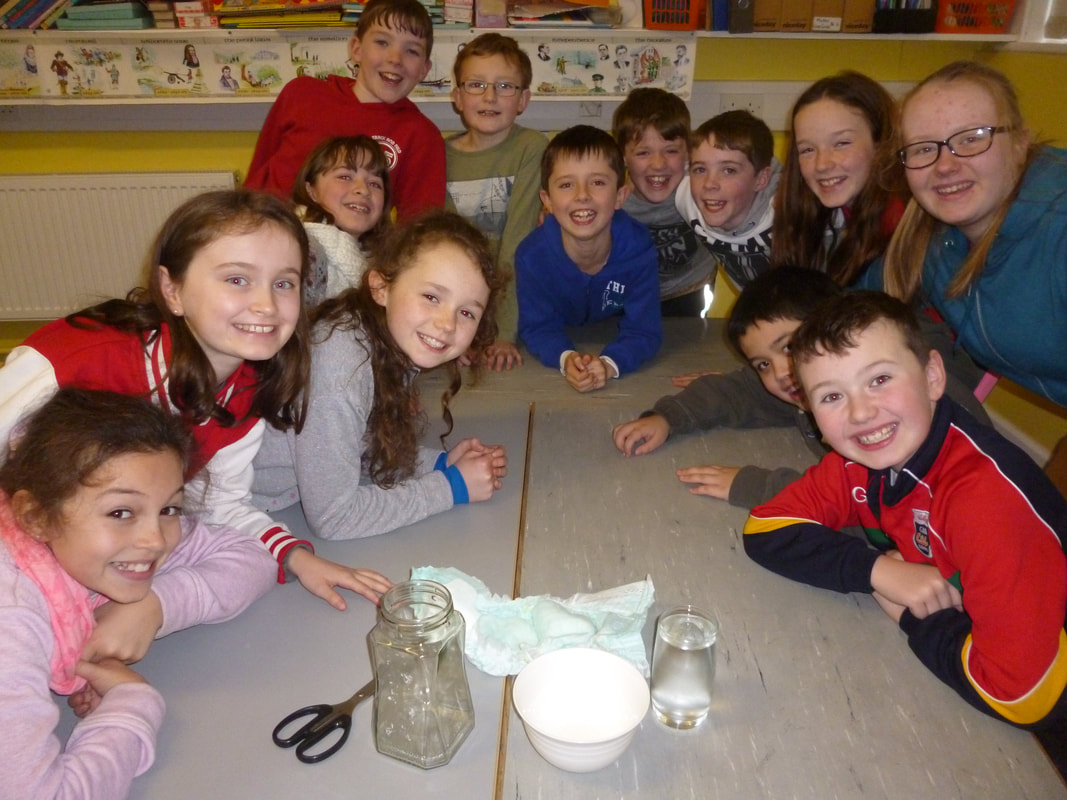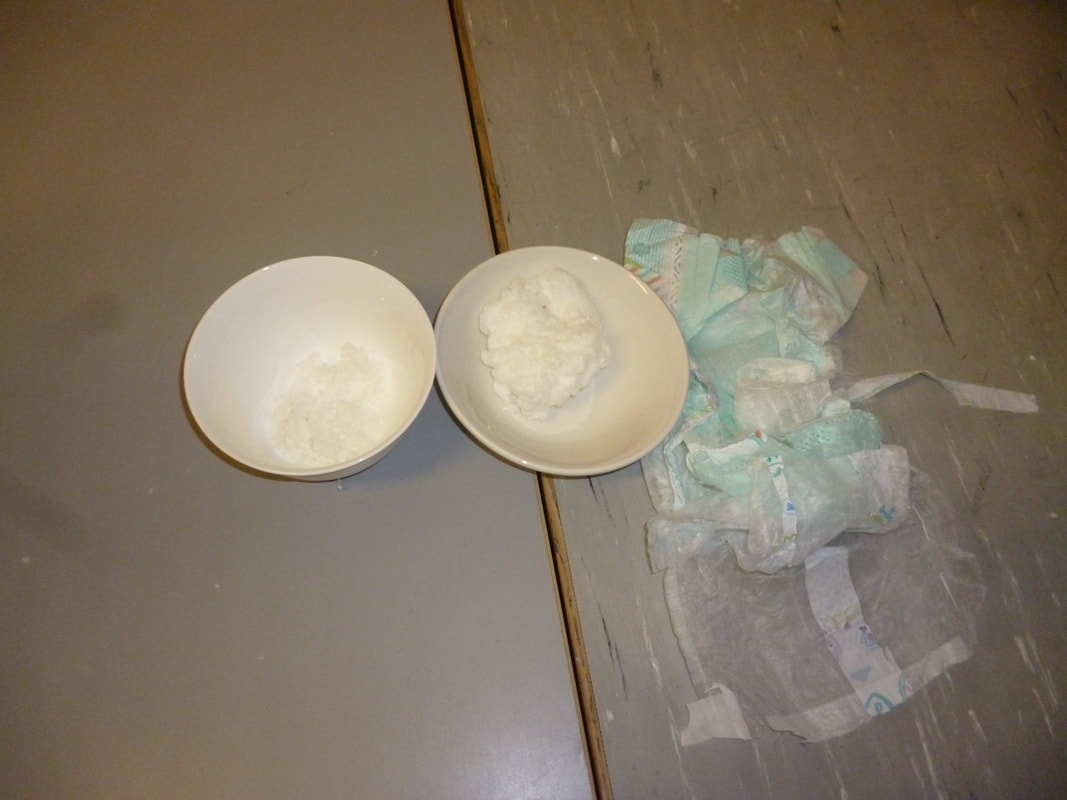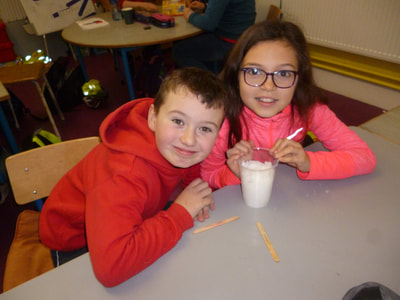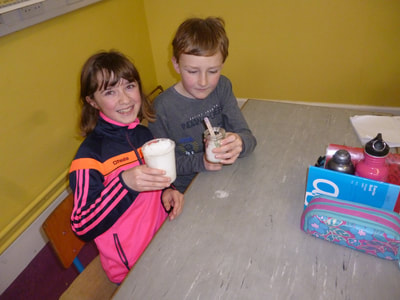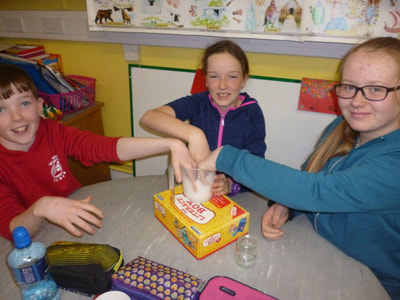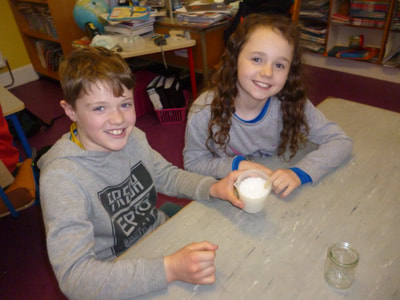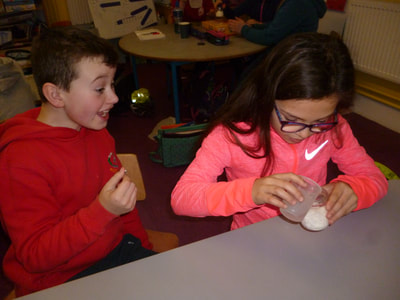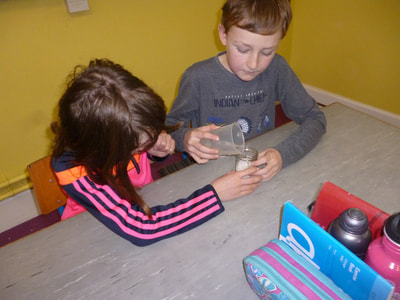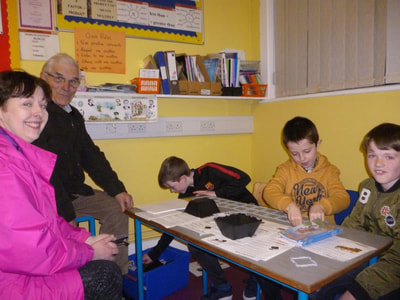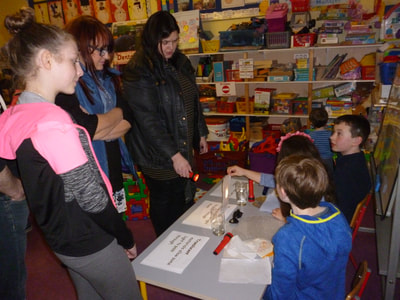Experimenting with Electricity.
Science Foundation Ireland
Discover Science & Maths Award 2019
Acids and Alkaline tests
Science experiments
Some world famous landmarks recreated for Engineers Week
Scientific Sue
Ingenious Engineers Show
Engineers Week 2019 - Birr Theatre 06 March
The children from 1st to 6th class travelled to Birr Theatre to see this amazing show!
This highly creative and exciting engineering show explores some of the amazing scientific discoveries and engineering feats endeavoured by some of our hugely talented Irish Scientists over a period of 350 years.
This show covered the following themes and topics:
This highly creative and exciting engineering show explores some of the amazing scientific discoveries and engineering feats endeavoured by some of our hugely talented Irish Scientists over a period of 350 years.
This show covered the following themes and topics:
- Air pressure
- Boyle’s Law
- Discovery of carbon dioxide
- Liquefaction of gases – cloud in a bottle
- Combustion and the invention of the safety lamp and the ejector seat
- Temperature scales
- Acid Base/Alkali reactions and Neutralisation
- Use of indicators to show how antacids work
- Pneumatics
- Flight
- DC electricity and the invention of the portable AED
- How our local scientists and engineers helped put Neil Armstrong on the Moon!
Apple Pie making! yummy!!!
Lismore Primary Mobile Science Workshops.... 17/12/2018

We were delighted to have Roseanne Leddy from Lismore Primary Science visit the junior room where we got to carry out plenty of hands on experiments!!
Melting Chocolate experiment - Junior room
SEAI workshop with Hans - 15th October 2018
The children in the senior room had two excellent workshops with Hans from SEAI (Sustainable Energy Authority of Ireland) on the topic of Energy.
Newton's cradle and the potato battery proved to be very popular!!!
Newton's cradle and the potato battery proved to be very popular!!!
Science Foundation Ireland
Discover Science & Maths Award 2018

After our success in achieving a Certificate of STEM in 2017, this year we are applying for our
Plaque of STEM Excellence
with the Science Foundation Ireland Discover Science and Maths Awards.
SFI Award Number: TP020
Plaque of STEM Excellence
with the Science Foundation Ireland Discover Science and Maths Awards.
SFI Award Number: TP020
STEP 1: SCIENCE
We were asked to provide evidence of the children engaging in 6 hands-on science investigations in school.
Light
by Niamh Patterson, 5th Class
Your browser does not support viewing this document. Click here to download the document.
Our 2nd class pupil Thia documented the ingredients and procedure!!
Your browser does not support viewing this document. Click here to download the document.
THE NATURE WALK
In school we went on a nature walk.
It was great fun.
We went down the road a bit.
We had a sheet with all the names of the trees and their buds.
We went down the road looking at the trees.
We had all the names of the trees on the sheet so we could see the names of the trees and see what they look like.
We saw a lot of ash trees.
It was really fun and interesting at the same time.
We kept walking down the road a bit
We found a wood.
We went in it.
We found lots of signs of spring there.
By Lauren Dermody
2nd Class
In school we went on a nature walk.
It was great fun.
We went down the road a bit.
We had a sheet with all the names of the trees and their buds.
We went down the road looking at the trees.
We had all the names of the trees on the sheet so we could see the names of the trees and see what they look like.
We saw a lot of ash trees.
It was really fun and interesting at the same time.
We kept walking down the road a bit
We found a wood.
We went in it.
We found lots of signs of spring there.
By Lauren Dermody
2nd Class
MIXING PAINT
When we were mixing paint in school, we discovered when you mixed red and yellow you get orange, when you mix blue and yellow you get green and when you mix blue and red you get purple. That is what we found out.
BY Paddy Hogan
When we were mixing paint in school, we discovered when you mixed red and yellow you get orange, when you mix blue and yellow you get green and when you mix blue and red you get purple. That is what we found out.
BY Paddy Hogan
Our science investigation on magnets was detailed by Ava, a 2nd class pupil.
Your browser does not support viewing this document. Click here to download the document.
As part of this first step in our aim to achieve our DPSM Plaque of Stem Excellence, we were also asked to participate in a Science event.
Green Schools Expo
RDS, Dublin 22 February 2018
We attended the Green Schools Expo in the RDS last February. All classes had the opportunity to take part in experiments in the themes of Green schools on the day.
Click to set custom HTML
Trip to the RDS
On Thursday 22nd of February 1st -6th class pupils of Redwood N.S. travelled on a bus to the RDS in Dublin to see a science exhibition.
At 9am everyone from Redwood N.S. jumped onto the bus very excited to travel to Dublin. We sang songs on the way up and said prayers if we saw an ambulance with flashing lights. When we arrived we went into a big building to go to the bathroom. After that we walked over to another big building, when we were walking we passed a lot of huge buses and we passed horse stables. Eventually we reached the RDS it was huge. We saw other schools waiting in a line most of them were secondary schools. Michelle went off and came back with wrist bands and stickers with the number three on them.
When we headed in we were told to go to our meeting pole the number on was 3 so if we got lost that was where we had to go. We split into 2 groups.
In group 1 there was 7 of us and 13 in group 2. Group 1 walked over to a stand about nature. (The people running the stand had helped us with a previous green flag.) We had magnifying glasses and looked at dead animals up close and different types of tree barks. When we were about to leave that stall they gave us two trees a Birch tree and an Ash tree. We then walked over to the WEEE stand out on display there was old video games, radios, phones and hairdryers. We got pencils that were made out of recycled denims and money. Another part of it was making windmills and about energy. Beside that stand was a stall about bamboo toothbrushes the handle was made out of bamboo and the bristles were made out of activated charcoal. The man there told us that it took hundreds of years for plastic toothbrushes to decompose so they made cheap bamboo and charcoal toothbrushes.
While we were doing this group 2 was trying out VR headsets there were able to see was is happening to our world because of global warming. They also went to a stand named UISCE, it was about how to make dirty water clean. The man put dirty water into a filter and when it slowly came out it was clean. After that they strolled over to a stall that was about trying to stop flooding you had to buy equipment to build a dam to stop the Lego people drowning. We all met up and were wandering around when one of our teachers spotted Siobhan Ryan a weather presenter on RTÉ. She came over and predicted the weather for 2050 with us. We got a picture with her and asked her some questions about the weather.
We went flew over to one last stall it was about singing and we all sang Mr. Tambourine man, then Moya and I sang an Ed Sheeran song it was so much fun. I would love going again and we had a great day out.
Niamh Patterson
5th Class
On Thursday 22nd of February 1st -6th class pupils of Redwood N.S. travelled on a bus to the RDS in Dublin to see a science exhibition.
At 9am everyone from Redwood N.S. jumped onto the bus very excited to travel to Dublin. We sang songs on the way up and said prayers if we saw an ambulance with flashing lights. When we arrived we went into a big building to go to the bathroom. After that we walked over to another big building, when we were walking we passed a lot of huge buses and we passed horse stables. Eventually we reached the RDS it was huge. We saw other schools waiting in a line most of them were secondary schools. Michelle went off and came back with wrist bands and stickers with the number three on them.
When we headed in we were told to go to our meeting pole the number on was 3 so if we got lost that was where we had to go. We split into 2 groups.
In group 1 there was 7 of us and 13 in group 2. Group 1 walked over to a stand about nature. (The people running the stand had helped us with a previous green flag.) We had magnifying glasses and looked at dead animals up close and different types of tree barks. When we were about to leave that stall they gave us two trees a Birch tree and an Ash tree. We then walked over to the WEEE stand out on display there was old video games, radios, phones and hairdryers. We got pencils that were made out of recycled denims and money. Another part of it was making windmills and about energy. Beside that stand was a stall about bamboo toothbrushes the handle was made out of bamboo and the bristles were made out of activated charcoal. The man there told us that it took hundreds of years for plastic toothbrushes to decompose so they made cheap bamboo and charcoal toothbrushes.
While we were doing this group 2 was trying out VR headsets there were able to see was is happening to our world because of global warming. They also went to a stand named UISCE, it was about how to make dirty water clean. The man put dirty water into a filter and when it slowly came out it was clean. After that they strolled over to a stall that was about trying to stop flooding you had to buy equipment to build a dam to stop the Lego people drowning. We all met up and were wandering around when one of our teachers spotted Siobhan Ryan a weather presenter on RTÉ. She came over and predicted the weather for 2050 with us. We got a picture with her and asked her some questions about the weather.
We went flew over to one last stall it was about singing and we all sang Mr. Tambourine man, then Moya and I sang an Ed Sheeran song it was so much fun. I would love going again and we had a great day out.
Niamh Patterson
5th Class
STEP 2: TECHNOLOGY
For this part of the application, we were asked to provide 2 or more examples of how the children used ICT as part of their school work.
1.The children created a PowerPoint Presentation about our day out!
2. All the children are active users of our website and from 2nd class onwards they upload their own class blogs onto our website.
Extract taken from our senior room blog......
In Redwood N.S. we go on laptops to write blogs to help us learn.
We write blogs in Redwood school. I write about different stuff like Running in Thurles and Pancakes.
Redwood are entering a competition for a certificate. We do the blogs on laptops. We can also go on Prezi, Story bird and Kahoot.
I think ICT is a very good idea for learning. I think every school should do it.
By Sophie Houlihan. 3rd class. In Redwood N.S.
We write blogs in Redwood school. I write about different stuff like Running in Thurles and Pancakes.
Redwood are entering a competition for a certificate. We do the blogs on laptops. We can also go on Prezi, Story bird and Kahoot.
I think ICT is a very good idea for learning. I think every school should do it.
By Sophie Houlihan. 3rd class. In Redwood N.S.
3. The senior classroom (Classes 3rd - 6th) researched New Zealand and created a Prezi
STEP 3: ENGINEERING
We were asked to provide 2 x examples of where the children investigated engineering in class or in the local area.
The children from junior Infants to 2nd class use construction blocks and Lego every day as part of 'Aistear' which is learning through play.
The children from junior Infants to 2nd class use construction blocks and Lego every day as part of 'Aistear' which is learning through play.
The children from 3rd to 6th class love to design and make using K'nex
We engineered towers out of spaghetti without eating too many marshmallows!!
Dream Big
Our Engineers Week resource

Dream Big.
Dream Big is a Science\Engineering film.
The film reveals that engineering is an exciting, creative, heroic, film where the world of today is brought to life. From the great wall of China and the world’s tallest buildings, to under water robots, solar cars, and smart, sustainable cities. And reveals the way that drives engineers to create better lives for people around the world. The majority of the people in the class favoured the Bridges, because the kids didn’t have to risk their lives to get to school. The others liked Stinky the under water robot, the solar powered cars, the building made curved to move with the wind so it doesn’t fall down in an earthquake or a hurricane.
We all thought engineering was boring until we saw this film, and it changed our mind about engineering. We loved this film because it has a great variety of different engineering. We were all glued to the screen, because Dream Big was an outstanding film.
We all loved this film and we rated it 10/10.
BY Sophie Houlihan, Jason Houlihan, Ben Hough and Leanne Sullivan
4th Class
Redwood N.S.
Dream Big is a Science\Engineering film.
The film reveals that engineering is an exciting, creative, heroic, film where the world of today is brought to life. From the great wall of China and the world’s tallest buildings, to under water robots, solar cars, and smart, sustainable cities. And reveals the way that drives engineers to create better lives for people around the world. The majority of the people in the class favoured the Bridges, because the kids didn’t have to risk their lives to get to school. The others liked Stinky the under water robot, the solar powered cars, the building made curved to move with the wind so it doesn’t fall down in an earthquake or a hurricane.
We all thought engineering was boring until we saw this film, and it changed our mind about engineering. We loved this film because it has a great variety of different engineering. We were all glued to the screen, because Dream Big was an outstanding film.
We all loved this film and we rated it 10/10.
BY Sophie Houlihan, Jason Houlihan, Ben Hough and Leanne Sullivan
4th Class
Redwood N.S.
STEP 4: MATHS
We were asked to provide 2 x examples of how the children used their maths skills as part of their science work.
1. The children from 3rd to 6th class used their maths skills when they constructed bridges out of paper. They made them at different strength levels and heights and discovered how strong they each were by placing various different weights on top!
Your browser does not support viewing this document. Click here to download the document.
The Nappy Experiment
How does a nappy work? How does a nappy hold all the water? Which nappy is best?
HOW IT ALL WORKS....
HOW IT ALL WORKS....
The Nappy Experiment
Our class were trying to find out how does the nappy work, how does it hold all the water. We decided to test the nappy and see how much water it holds. After discussing what would happen we predicted that the fluff will soak up water and become soggy, expand as it soaks up water.
This is how we did the experiment and what we used.
Equipment
Nappy Water Scissors Bowl Jar
Method
The result was that the cotton soaked up the water and it expanded because it was full of water.
When we were taking the soft white fluff out we found strips of water gel, when we peeled them open there was this white powder with little blue balls in it. We decided to test this as well as the fluff.
Using the same equipment as the nappy we scraped the powder into the jar and poured the water in, it soaked up the water better than the fluff and became a liquidy substance and expanded.
Next our teacher brought in four different types of nappies Aldi, Supervalu, Pampers nappy and Pampers pull up. We were going to see which one held the most water. We all predicted different nappies would hold the most amount of water. We decided to test the nappies using the water gel.
This is how we did the experiment and what equipment we used.
Equipment
Four different type of nappies
Water and a measuring jug
Newspaper
Method
1. Put newspaper on the table to protect it
2. Next get one of the nappies and pour 100 mls of water into the nappy stay pouring water until the nappy leaks.
3. Add up all the 100mls
4. Repeat this for the other nappies.
Result
The one that held the most water was the Aldi nappy, it held 1 litre. It was also the cheapest packet of nappies.
It was really fun and interesting to do the experiment and everyone enjoyed it.
By Kate Houlihan
5th Class
Our class were trying to find out how does the nappy work, how does it hold all the water. We decided to test the nappy and see how much water it holds. After discussing what would happen we predicted that the fluff will soak up water and become soggy, expand as it soaks up water.
This is how we did the experiment and what we used.
Equipment
Nappy Water Scissors Bowl Jar
Method
- Cut open nappy with scissors
- Take soft white fluff out of the nappy
- Put the fluff in the jar
- Pour water into jar
The result was that the cotton soaked up the water and it expanded because it was full of water.
When we were taking the soft white fluff out we found strips of water gel, when we peeled them open there was this white powder with little blue balls in it. We decided to test this as well as the fluff.
Using the same equipment as the nappy we scraped the powder into the jar and poured the water in, it soaked up the water better than the fluff and became a liquidy substance and expanded.
Next our teacher brought in four different types of nappies Aldi, Supervalu, Pampers nappy and Pampers pull up. We were going to see which one held the most water. We all predicted different nappies would hold the most amount of water. We decided to test the nappies using the water gel.
This is how we did the experiment and what equipment we used.
Equipment
Four different type of nappies
Water and a measuring jug
Newspaper
Method
1. Put newspaper on the table to protect it
2. Next get one of the nappies and pour 100 mls of water into the nappy stay pouring water until the nappy leaks.
3. Add up all the 100mls
4. Repeat this for the other nappies.
Result
The one that held the most water was the Aldi nappy, it held 1 litre. It was also the cheapest packet of nappies.
It was really fun and interesting to do the experiment and everyone enjoyed it.
By Kate Houlihan
5th Class
STEP 6: STEM SHOWCASE
For the final part of the application process, we were asked to provide evidence of how we communicated our STEM work to others.
We held an Open evening in March where we presented and explained our STEM work for our parents, families and local community.
We held an Open evening in March where we presented and explained our STEM work for our parents, families and local community.
Your browser does not support viewing this document. Click here to download the document.




